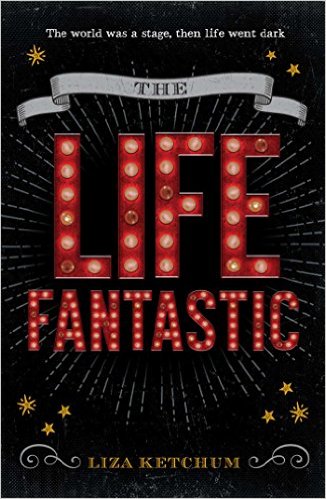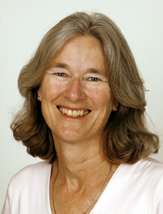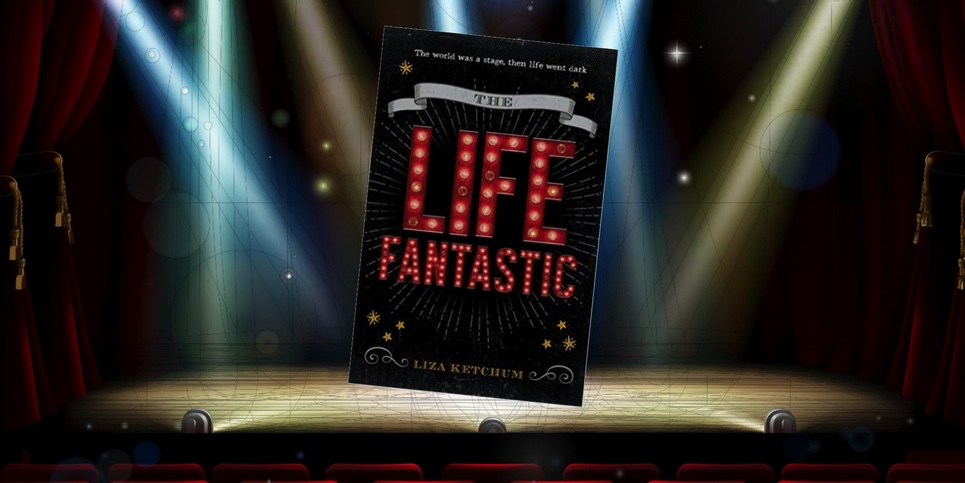Liza Ketchum | The Children’s Book Review | February 26, 2017
Stepping into long-lost worlds with Liza Ketchum, author of The Life Fantastic (Merit Press)
When I was a child, I longed to climb into a time machine and travel back to the past. Would I go to Ancient Greece when the Acropolis was being built? Or join the angry citizens of Boston, as they dumped crates of tea into the harbor? Or would I follow a covered wagon through tall prairie grass, like Laura from Little House on the Prairie?
Of course, the time machine didn’t exist—but when I became a writer, I realized I could create that time travel experience through historical fiction. Whether I transport my readers back to the state of Vermont when it was still an Independent Republic (Where the Great Hawk Flies); to San Francisco during the gold rush (Newsgirl); or to a vaudeville stage in Brooklyn, New York (The Life Fantastic), I need to use specific, sensory details to recreate a lost world—and I want to learn as much as I can about the people who made up that history; people who were more diverse then the (mostly) white men and boys I found in my childhood history books.
To achieve this illusion of time travel, I spend months researching and collecting data about daily life in that time. I read old diaries and newspapers—including the ads—to soak up information about food, clothing, transportation, employment, and housing. I visit historical societies and study period prints, drawings, maps, and photographs (if photography was in use during the time I’m focused on).
Although my story is imaginary, the actual details of the place should be as accurate as possible. When I was writing Newsgirl, for example, I found a map of 1851 San Francisco that allowed me to locate the post office, the bakery, and the newspaper office in the year that my narrator arrived in the city. I wanted my reader to smell the fresh ink in the newspaper office, to hear the cries of newsboys hawking papers from back East, to imagine ships’ masts tangled like a forest of trees in the city’s harbor—and to meet the diverse cast of characters who were drawn to California from every corner of the world.
If possible, I travel to the area I’m writing about, even if centuries have passed since my story takes place. As I researched The Life Fantastic, my novel about vaudeville, I visited the beautiful restored Opera House in Leadville. I walked down the aisles of the theater, restored to its original grandeur, taking pictures of the plush seats and decorated balconies. I climbed up onstage to help me imagine how Teresa, my narrator, might feel when she strides out from the wings and belts her song to patrons in the topmost balcony.
A more challenging aspect of writing historical fiction is the need to understand the mores, the political situation, the culture, the attitudes and language of the past. Where the Great Hawk Flies takes place in Vermont just after the American Revolution. Though I grew up in Vermont and lived there for many years, and though I’ve walked across the same pastures that my ancestors once farmed, I didn’t know how people spoke more than two centuries ago. To help me flavor the novel with speech patterns from that time, I read diaries from that period, written by Vermont kids who were the same age as my two narrators. I copied phrases from the diaries, printed them out in a huge font, and pinned them up over my desk. I reread the phrases every day as I started to write. Expressions such as “I durst not cry,” “Jack Frost bites so hard,” “I cut some sticks for making pudden spoons” rang in my ears and helped me find my characters’ voices.
The Life Fantastic, my recent YA novel, takes place in 1913, when vaudeville was America’s most popular form of entertainment. Teresa, the narrator, wins a singing contest in her hometown of Brattleboro, Vermont and steals away on the night train to New York City, hoping to become a star on Broadway’s “Great White Way.” There she meets Pietro and Marvin Jones, an African American father and son dance team. Teresa and Pietro become competitors—and tentative friends. But their friendship is dangerous. In 1913, black men in America could be lynched for simply looking at white girls or women. I needed to read widely about this period, to be sensitive to the damaging prejudice and violence that African Americans faced in that time. While readers might wish that Pietro and Teresa could develop a romantic relationship, I had to be true to the reality of that time. While Teresa is naïve, Pietro knows, all too well, the dangers they would face if they were to act on their feelings.
My great-grandparents eloped and ran away to the vaudeville stage at the end of the 19th century. I know very little about their lives on the road, though being a traveling performer in that era wasn’t easy. But my great-grandparents were white. African American performers, such as Pietro and his father, faced far more difficult challenges onstage, as well as in daily life, than their white counterparts. When I realized that the great African American civil rights leader and writer, W.E.B. DuBois, was active during this time, I decided that Pietro would carry Du Bois’s book—The Souls of Black Folk—with him everywhere. This book became Pietro’s endowed object: a talisman that reveals a lot about his character and his fierce commitment to justice and equality. His interest in Du Bois also provides the reader with a political lens through which to view the past.
No matter what time period I strive to recreate, I need to avoid anachronisms and anchor the reader in the reality of the past, to the best of my ability. And I hope that, when my reader re-emerges from her travel through time, the meaning of that distant era, and its relationship to the present day, will linger like a cloak she wrapped around herself when she first stepped into that long-lost world.
***
 The Life Fantastic
The Life Fantastic
Written by Liza Ketchum
Publisher’s Synopsis: As seen in the Publishers Weekly African-American Titles for Young Readers feature!
Will Teresa Find Fame But Lose Her Soul?
It’s 1913 and vaudeville is America’s most popular form of entertainment. Thousands of theaters across the country host vaudeville troupes. In Brattleboro, Vermont, fifteen-year-old Teresa LeClair–who has a “voice like a nightingale”–remembers the thrill of singing onstage as a child. But her parents have given up life on the road, and her father has decided that Teresa, blessed with perfect pitch, should drop out of school and work in the tuning rooms of the organ factory.
Determined to escape the life her father wants for her, Teresa wins an amateur singing contest in Brattleboro’s opera house and steals away on the night train to New York. She hopes to become a star on Broadway’s “Great White Way,” but has no idea of the challenges that lie ahead. There she runs into Pietro Jones and his father, talented African American dancers. Teresa and Pietro become competitors as well as unlikely friends.
At a time when young black men could be lynched for simply looking at a white girl, Pietro understands, better than Teresa, the danger of their relationship. Teresa’s quest to find her voice onstage and in her life, far from the support of her family, takes place against a complex racial backdrop of American history.
Ages 13+ | Publisher: Merit Press | 2017 | ISBN-13: 978-1440598760
Available Here:
About Liza Ketchum
 Liza Ketchum grew up in a family that placed a high value on the arts, particularly storytelling, music, and dance. Her father, also a writer, loved to tell about Liza’s great-grandmother, a singer and pianist who caused a scandal when she eloped with a musician at the height of vaudeville’s popularity. That story, along with the vaudeville songs that her grandfather used to sing, inspired Liza to write The Life Fantastic. She is the author of sixteen published books of fiction and nonfiction for young readers, including the recently published Out of Left Field, set in contemporary Boston with echoes to the Vietnam War era. Her middle grade novel, Where the Great Hawk Flies, won the Massachusetts Book Award for Young Adults. Liza and her husband divide their time between the Boston area and southern Vermont.
Liza Ketchum grew up in a family that placed a high value on the arts, particularly storytelling, music, and dance. Her father, also a writer, loved to tell about Liza’s great-grandmother, a singer and pianist who caused a scandal when she eloped with a musician at the height of vaudeville’s popularity. That story, along with the vaudeville songs that her grandfather used to sing, inspired Liza to write The Life Fantastic. She is the author of sixteen published books of fiction and nonfiction for young readers, including the recently published Out of Left Field, set in contemporary Boston with echoes to the Vietnam War era. Her middle grade novel, Where the Great Hawk Flies, won the Massachusetts Book Award for Young Adults. Liza and her husband divide their time between the Boston area and southern Vermont.
Writing Historical Fiction: The Art of Time Travel was written by Liza Ketchum, author of The Life Fantastic. For similar books and articles, follow along with our content tagged with African American, Art Of Writing, Books Set In New York, and Historical Fiction.


1 Comment
This book sounds fantastic!! Thanks for sharing your writing process.